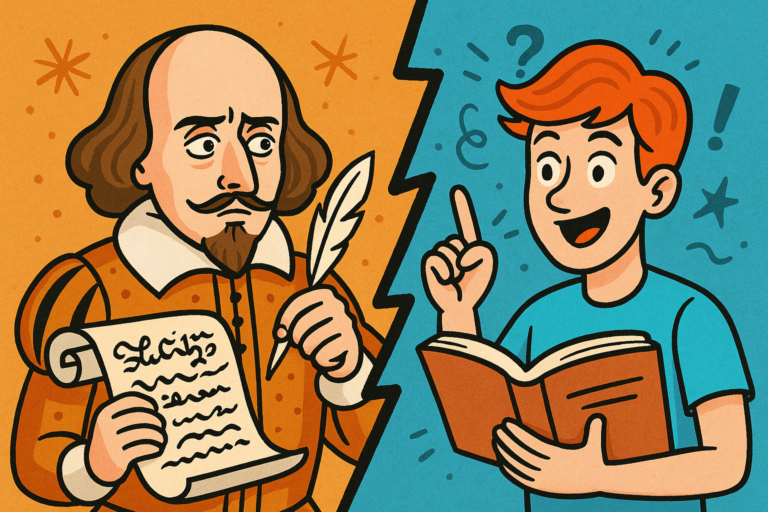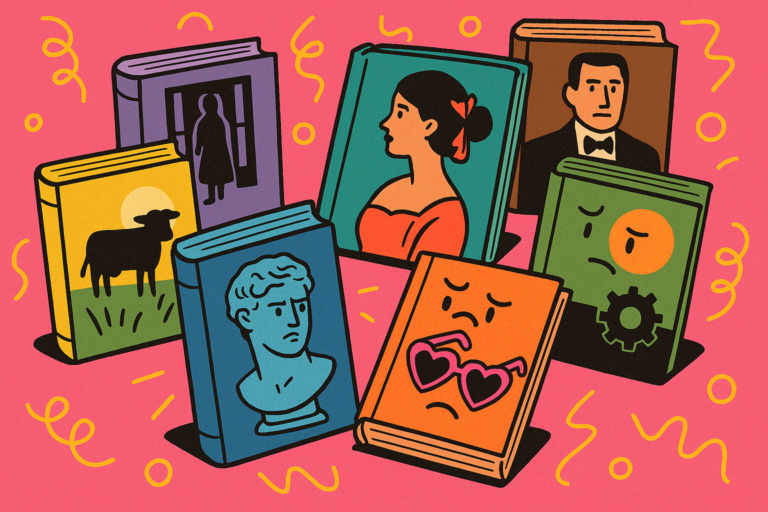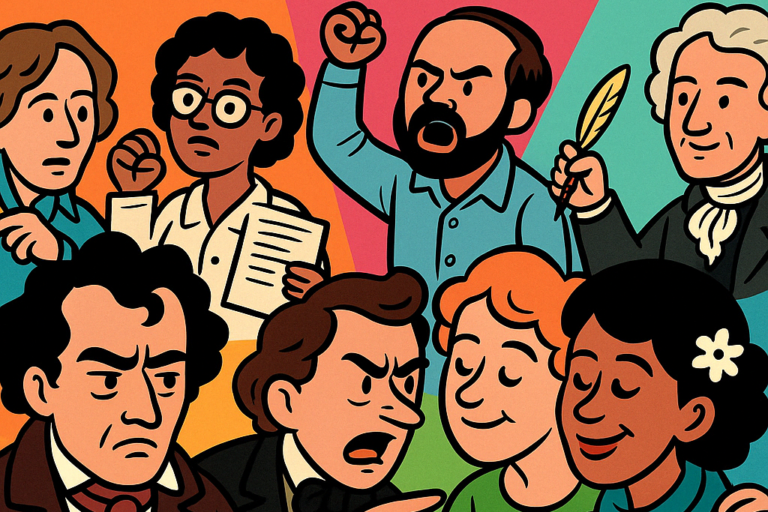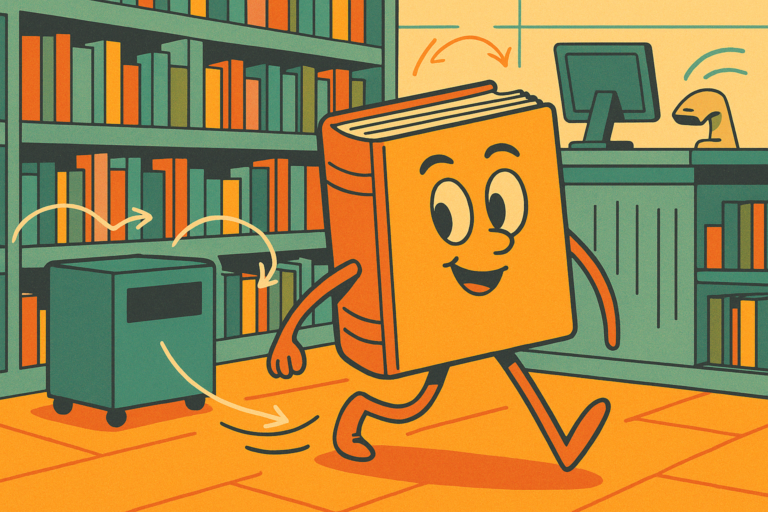Utopias Vs. Dystopias: What Gets More Limelight and Why?
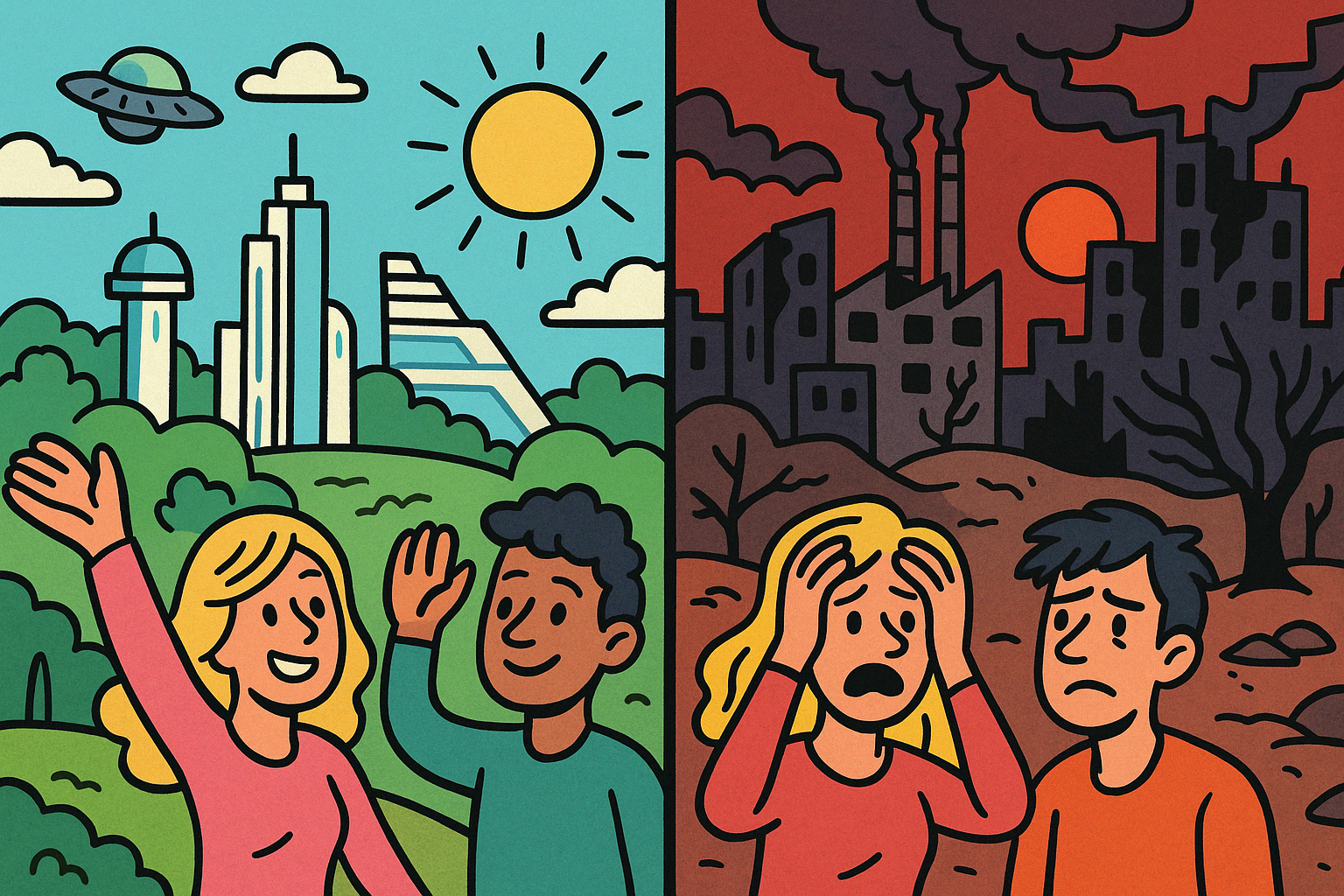
So here’s something I couldn’t stop thinking about while diving into this topic: why do dystopias get so much more attention than utopias?
From Orwell’s 1984 to The Handmaid’s Tale, from Black Mirror to The Hunger Games, we’re absolutely surrounded by bleak futures in fiction and media.
But where are the bold, idealistic visions of the world done right?
Both utopias and dystopias are built to challenge how we think about society—sure—but one clearly gets more cultural real estate. And that’s not just a vibe; it’s measurable. A simple count of books, films, and shows reveals a dramatic skew toward dystopian settings, especially in the last 50 years. Why?
This blog digs into that imbalance—not to pit one against the other—but to figure out what this spotlight on collapse says about us, our anxieties, and what we think the future should (or could) look like.
Dominance of Dystopias in Media and Literature
Okay, so let’s unpack the elephant in the room: dystopias dominate. And not just in terms of volume—but in how deeply they’ve shaped our collective imagination of the future.
1. Dystopias Tap Into Our Negativity Bias
Psychologists have long pointed out that negative information is more attention-grabbing and emotionally sticky than positive. This is baked into our evolutionary wiring.
We pay more attention to threats than comforts. So when fiction offers us a world where things go horribly wrong—oppressive regimes, environmental collapse, rogue AI—we’re hooked. Dystopias resonate because they simulate danger, and danger keeps us watching.
2. They’re Built for Conflict
Let’s be honest: utopias don’t make for juicy plots. If everyone’s happy and things are working perfectly, then… what’s the story?
Dystopias, on the other hand, are conflict machines. There’s always an underdog, an oppressive force, a resistance, a choice between complicity and rebellion. It’s narrative gold.
Take The Hunger Games—it’s not just about tyranny; it’s about the spectacle of suffering as entertainment. Or Children of Men, where infertility isn’t just a plot point but a metaphor for lost hope. These stories do things to us. They keep tension high and stakes personal.
3. They Reflect Real-World Anxieties
This one’s big. Dystopias aren’t just imaginative horror shows—they’re cultural x-rays. Think about how Black Mirror holds up a cracked mirror (pun intended) to our relationship with tech, or how The Handmaid’s Tale became a protest symbol during political turmoil.
These stories help us process the chaos of modern life: surveillance, climate change, AI ethics, institutional decay. They externalize systemic fears in a way that feels tangible, giving us a framework to critique or even prepare for what’s coming.
4. They’re Seen as More “Realistic”
There’s a cynical consensus that utopias are naïve. Experts I’ve read (and spoken to!) often frame utopias as “abstract” or “rigid”—more philosophical exercises than usable blueprints. Dystopias, by contrast, feel grounded.
Think of Snowpiercer, where class stratification is literally mapped onto a train. It’s exaggerated, sure, but it feels true.
Interestingly, dystopias are often more meticulously world-built, with internal logic that maps onto existing power structures.
That makes them more persuasive—not because they’re better ideas, but because they’re better dramatized.
5. The Market Wants Darkness
And hey, let’s not ignore the industry side. From a publishing standpoint, dark sells. The grim urgency of a dystopia creates tension right from the pitch. Publishers know that, producers know that, and audiences have come to expect it.
When Hollywood’s spending hundreds of millions, they want something that hits emotionally and looks gritty and cool on screen. Think of how Elysium or Blade Runner 2049 turned dystopia into visual art.
Utopias in the Shadows – Marginalization and Misconceptions
Alright, now that we’ve unpacked why dystopias get so much attention, it’s time to ask the flip side: what’s going on with utopias?
Why do they feel like the awkward guest no one invites to the speculative fiction party?
It turns out, the reasons for utopia’s underdog status aren’t just creative—they’re cultural, political, and psychological.
Let’s walk through the five big ones that stood out to me in the research.
1. Static Structures = “Boring” Narratives
Let’s just say it: utopias are tough to plot. If the world’s already perfect—or close to it—what exactly is the problem? And if there’s no problem, why should we care?
Storytelling thrives on tension. In most utopias, the stakes are low because the central conflicts have been resolved—war is gone, inequality’s fixed, climate is stable, people are fulfilled. That’s awesome in theory… but it doesn’t leave much for a protagonist to do. The result is often what Ursula K. Le Guin called the “sermon disguised as story”—philosophically rich, but dramatically flat.
Even the classic Looking Backward by Edward Bellamy (1888), one of the foundational utopian texts, reads more like a political pamphlet than a novel. And while some writers have tried to address this—Le Guin’s The Dispossessed comes to mind—they often have to “smuggle in” conflict from the outside or contrast with a dystopian counterpart.
So yeah, utopias don’t naturally lend themselves to dramatic arcs, which makes them a hard sell for readers, viewers, and publishers alike.
2. Ideological Suspicion – Utopias and Authoritarian Baggage
This one really surprised me during research: utopian thinking carries historical baggage—and it’s pretty heavy.
After the 20th century saw regimes like Stalinist Russia and Maoist China try to impose “perfect” societies through totalitarian means, utopias started to feel suspect, even dangerous. The word itself became politically radioactive in some circles. Instead of being aspirational, utopia became shorthand for delusional, controlling, or detached from reality.
Take Aldous Huxley’s Brave New World. It’s not a dystopia in the traditional sense—there’s no visible oppression, war, or poverty—but it’s a cautionary tale about engineered happiness and the loss of individual freedom. That blurring of lines between utopia and dystopia reinforces the idea that any “perfect” society is likely hiding something sinister.
So while dystopias critique power structures, utopias risk being perceived as authoritarian blueprints. And in our current climate, where individual freedom and skepticism of systems reign supreme, that’s a tough PR problem to overcome.
3. Parody and Collapse Tropes – The Inevitable Slide into Dystopia
Even when we do get utopias in fiction, they often come with a twist: they don’t last. Or they never really were utopias to begin with.
We’ve all seen this trope. Everything seems perfect… until the protagonist peels back the curtain and discovers surveillance, class oppression, or deep systemic rot. It’s basically the backbone of The Giver, Equilibrium, or Logan’s Run. And don’t get me wrong—those stories are compelling. But they reinforce the message that utopias are illusions or worse, traps.
There’s almost an implicit belief baked into the narrative code: “If it’s too good to be true, it is.”
This also has the side effect of making readers more comfortable with dystopias—at least they’re honest about being awful. Utopias feel dishonest, or like setups for a third-act betrayal. And when a trope gets that ingrained, it’s hard for genuine utopian visions to compete.
4. Genre Bias – Sci-fi and Speculative Fiction Skew Dark
Here’s a weird thing: even though sci-fi is supposed to be about imagination and possibility, the genre leans dark. Very dark.
Whether it’s cyberpunk, post-apocalyptic worlds, techno-surveillance nightmares, or ecological collapse, most speculative fiction doubles down on what could go wrong rather than what could go right. And I get it—the stakes are higher, the worlds feel edgier, the metaphors sharper.
But this genre bias reinforces the idea that imagining positive futures is either “unrealistic” or “unserious.” And that’s a shame. Especially because sci-fi, at its best, is a sandbox for trying out ideas. It should be a place where hopeful futures get tested too.
There are exceptions—Kim Stanley Robinson’s Ministry for the Future is a notable recent example—but they’re rare and often come with caveats. The result? A feedback loop where creators expect dystopia, audiences crave it, and publishers greenlight more of it.
5. Contemporary Cynicism – The Distrust of Perfection
Let’s end on what might be the most human reason: we just don’t buy it anymore.
In an age of climate breakdown, rising inequality, mass disinformation, and political gridlock, the idea of a fully-functioning, peaceful, equitable society feels… fake. Like, we want to believe in it, sure—but we’ve been burned too many times.
We’re living through a moment of what some scholars call “apocalyptic realism”—a belief that the collapse isn’t just likely, it’s already underway. In that mindset, utopias don’t offer hope, they feel tone-deaf.
This deep cultural cynicism is a real hurdle for writers, artists, and thinkers who want to imagine better futures. There’s a risk of sounding pollyannaish or naïve—or worse, of ignoring the real pain that people are experiencing right now.
So while the desire for utopia is still there, our ability to believe in it has taken a hit. And that distrust keeps utopias on the margins.
Cultural Consequences of Dystopian Dominance
Now that we’ve talked about the imbalance between utopias and dystopias, let’s ask a tougher question: what does that imbalance actually do to us?
Because stories don’t just entertain—they shape how we think. Especially when it comes to the future.
1. The Normalization of Crisis
When dystopias become the dominant lens through which we imagine tomorrow, crisis becomes the default setting. Whether it’s authoritarian tech regimes (Black Mirror), environmental collapse (The Road), or class warfare (Snowpiercer), we start to expect catastrophe.
And that expectation seeps into public consciousness. I’ve talked to people—smart, politically aware people—who genuinely believe it’s too late to reverse climate change or fix democracy. They’re not apathetic, they’re just exhausted by the sense of inevitable doom.
This is what scholars refer to as “crisis fatigue”—when the constant flood of bad futures becomes so overwhelming that people shut down emotionally. Dystopian dominance doesn’t just reflect fear—it can entrench it. And that’s dangerous, because when crisis feels inevitable, we stop imagining alternatives.
2. The Hope Deficit in Activism and Innovation
This one hit me hard. In reading interviews with climate activists, I kept coming across the same phrase: “It’s hard to fight for a future you can’t picture.”
That’s the core issue. Without compelling utopian models—or even just better futures—we lose the narrative fuel that drives big change. Tech innovation becomes reactive instead of visionary. Activism becomes focused on preventing the worst, instead of building the best.
Historian Rutger Bregman, in Utopia for Realists, argues that every major social reform—from universal suffrage to the welfare state—began as a radical, utopian idea. So when we lose the ability to imagine utopia, we’re not just missing stories—we’re missing blueprints.
3. Disempowerment vs. Agency
Dystopias often feature protagonists who are trapped, isolated, or overwhelmed by massive systems. That’s great for drama—but over time, it trains us to see ourselves as powerless.
In 1984, Winston’s rebellion is crushed. In The Hunger Games, Katniss wins the battle but the system remains broken. In The Matrix, freedom is barely distinguishable from another illusion. These endings feel honest, but they also reinforce the idea that individuals can’t really win.
Now imagine if we had more stories where communities collaborated to solve problems—where agency wasn’t crushed but celebrated. That’s where utopian thinking could play a crucial role. It’s not about blind optimism—it’s about offering models of empowerment, resilience, and collective action.
4. The Role of the Artist/Critic in Rebalancing the Narrative
So here’s where it gets a bit meta. If dystopias are oversaturated and utopias are underwritten, maybe it’s time to rebalance the scales. And that’s not just a creative challenge—it’s a cultural responsibility.
Artists, writers, filmmakers, and critics can reclaim utopian thinking—not as naïve fantasy, but as speculative resistance. We need more “protopian” stories (shoutout to Kevin Kelly for the term), where the future isn’t perfect, but it’s better than today. Messy, hopeful, in-progress futures.
Think about Becky Chambers’ Wayfarers series—quiet, character-driven sci-fi that focuses on kindness, cooperation, and possibility. Or Ted Chiang’s short stories, which ask “What if we got smarter, not crueler?” instead of just “What if AI took over?”
We don’t need to ditch dystopias. But we need more imaginative balance—more stories that point toward where we could go, not just where we might end up if everything breaks.
Final Thoughts
So yeah—dystopias are fascinating, effective, and culturally necessary.
But they’ve hogged the spotlight long enough. Utopias may be harder to write, but that makes them all the more vital right now. If we want to build better systems, policies, and futures, we need stories that show us what better could even look like.
Because when we can picture it—we’re that much closer to making it real.
